- File size:
- 9.0 GB
- Date added:
- Apr 02, 2024 | Last update check: 1 minute ago
- Licence:
- Trial | Buy Now
- Runs on:
- Windows 10 64-bit / 11 See Autodesk’s Product Support Lifecycle for support information
Revit is a robust architectural, structural and MEP design and documentation package that has become the standard BIM software for architects and building design professionals. It is the tool designed for architects and constructors who want to immediately implement all the parameters into a 3D model. The basis of the Autodesk Revit application is the Building Information Modeling, a comprehensive design process that starts by designing the concept of the building, and ends up by creating the project documentation for construction. It enables efficient collaboration of project teams, indicates errors and ways to eliminate them and carries out all simulations and analysis in real environment.
Using Revit you can easily create walls, columns, floor slabs, doors, windows, and other building elements. But using Revit is not just about modeling. You can annotate your drawings with text, dimensions, and other standard architectural symbols, generate live schedules of just about any part of your building, create legends, construction details, and compose sheets for printing out your document sets.
Until version 2017, Revit was the product family that consisted of three software: Revit Architecture, Revit MEP and Revit Structure. From version 2017, Revit merged into one box and replaced these stand-alone products.
What’s new in version 2025:
Revit 2025 features Total Carbon Analysis, focusing on sustainability and environmental impact, as well as improved modeling capabilities like Toposolid by Face, arrays with zero or single element, and profiles with multiple closed loops.
Core & Architecture
- Total Carbon Analysis: Estimation of both embodied and operational carbon impacts from the beginning of the design process (using Autodesk Forma and Carbon Insights).
- Project Management enhancements: Introduction of Sheet Collections for efficient sheet organization, flexible sheet groups, and improved search within the Project Browser.
- Enhanced data exchange: Simplified IFC export with IFC Category Mapping, support for STEP file linking and exporting, and updated gbXML schema.
- Site design enhancements: New “Toposolid by Face” tool to create Toposolids from mass slope surfaces, improved excavation and grading alignment, new “Toposolid Smooth Shading” tool, and new Dynamo nodes for automating Toposolid creation.
- Modeling capabilities: More efficient and flexible modeling with automatic wall joining and perforation of joined walls by doors and windows, and detailed modeling of curtain wall mullions (profiles with multiple closed loops). Improved arrays in families (create single element arrays and empty arrays).
- Collaboration and coordination: New “Coordination Model Changes” palette for precise tracking of modifications and improved coordination with Autodesk Docs.
Structure
- Concrete design: Powerful features for rebar modeling and documentation, such as parametric rebar slicing, preventing unintended modifications to bars, and creating more complete shop drawings.
- Steel design: Enhancements to the analytical model, detailed steel design features, simplified automation of steel connections, and the capability to split steel framing in columns with connections.
MEP
- MEP analysis: Enhanced support for operating schedules and analytical data, and new analytical model categories (analytical duct and pipe segments).
- Fabrication data management: Improved editing part geometry and data (add and remove type name), improved search functionality, and the ability to upload and assign images to parts.
Gallery

Revit 2025: Carbon Insights to create energy analytical model and analyze its operational and embodied carbon from conceptual to detailed design.
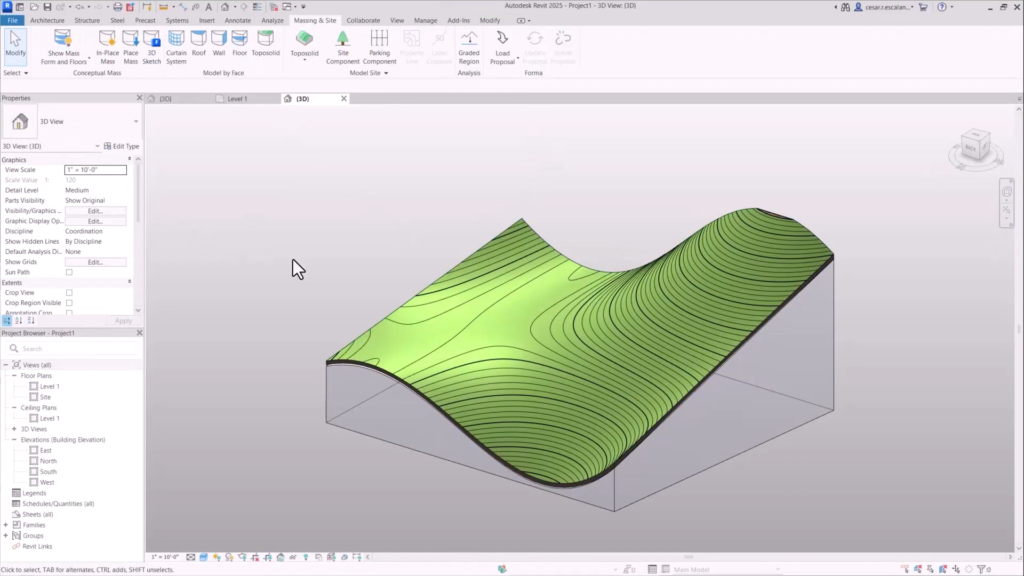
Revit 2025: Model complex topographies with Toposolid by Face.
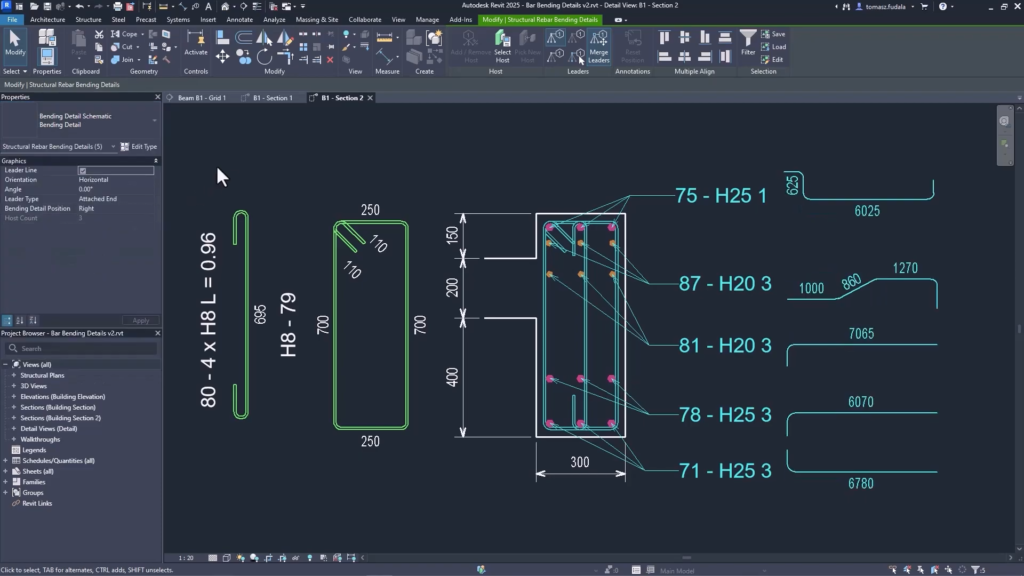
Revit 2025: Improved rebars to create detailed fabrication drawings.
Revit 2024
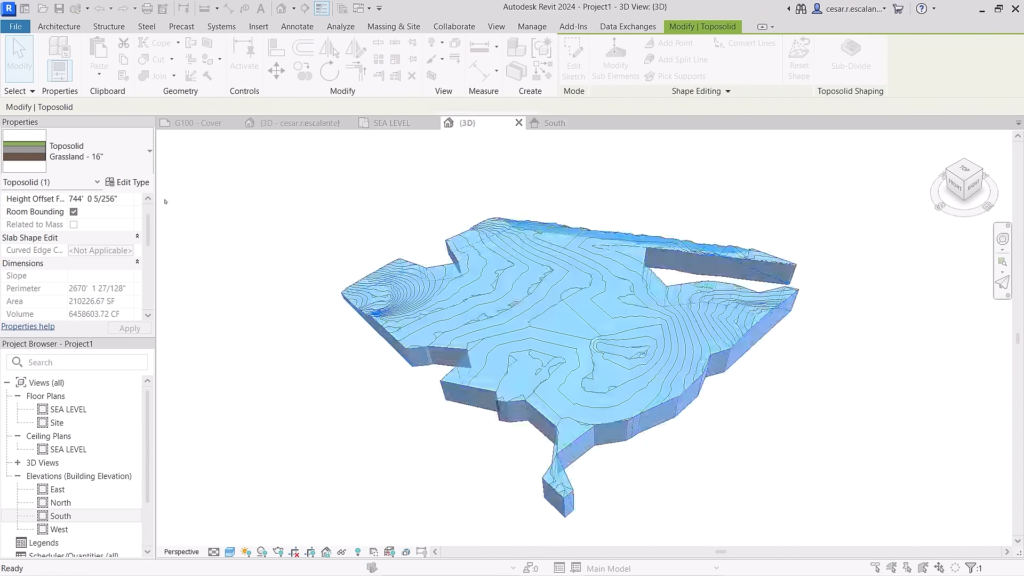
Revit 2024: Site modeling capabilities are improved with toposolids. ©Autodesk
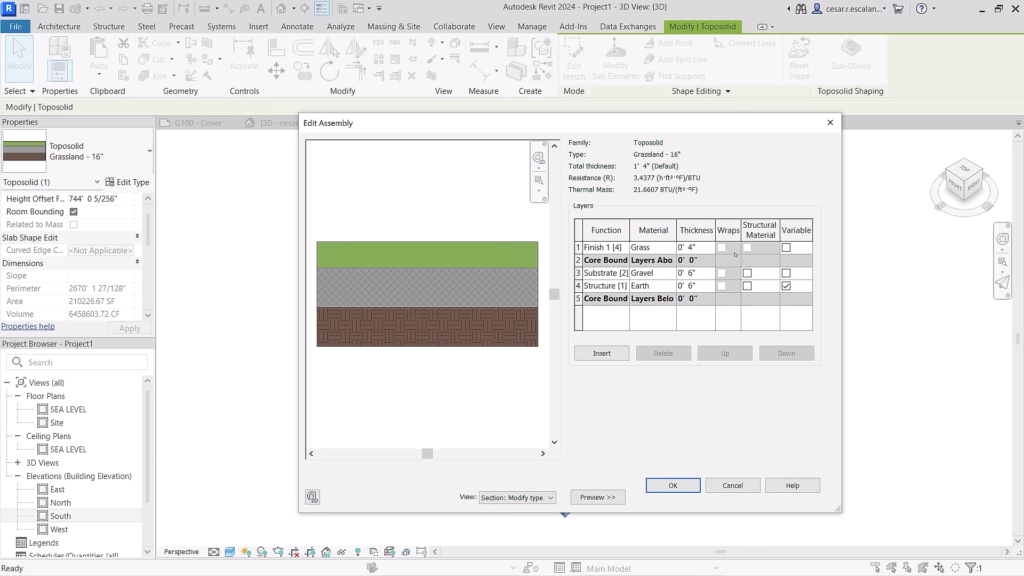
Revit 2024: Toposlids have compound layers and type/instance parameters. ©Autodesk

Revit 2024: Toposolids are similar to shape-edited floors. ©Autodesk
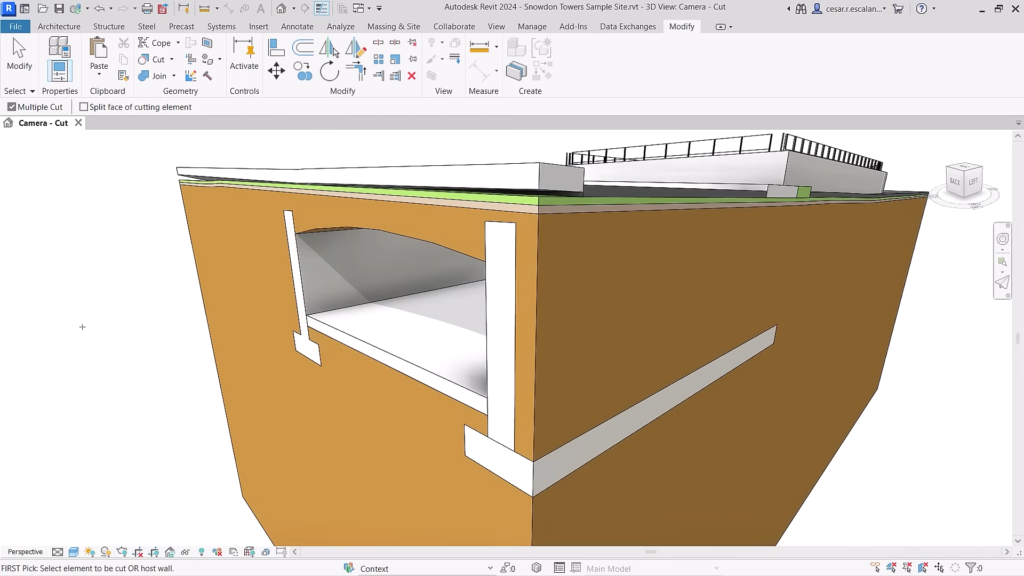
Revit 2024: Finally you can easily create horizontal holes and tunnels, as well as join topography with building elements. ©Autodesk
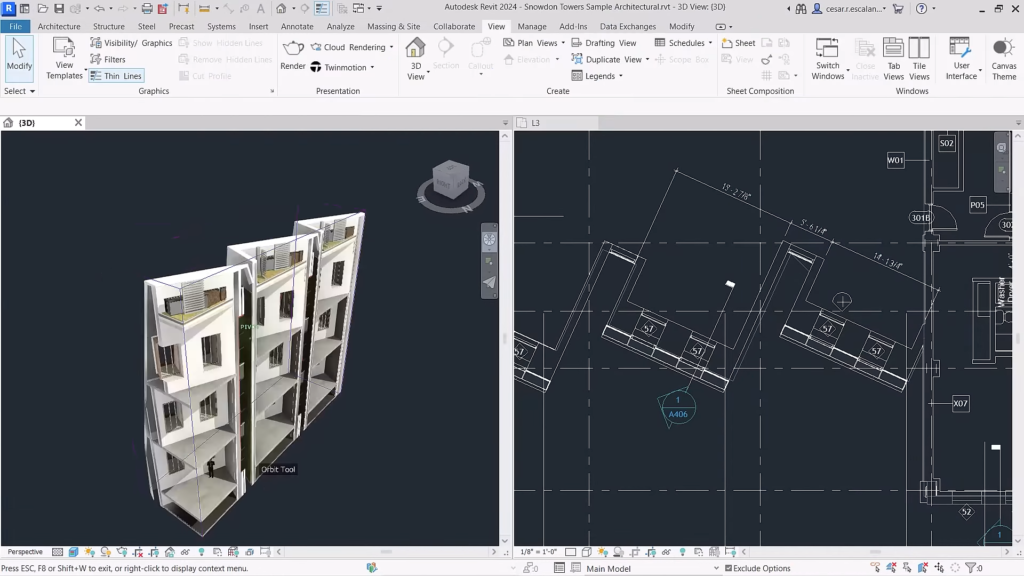
Revit 2024: AutoCAD-style dark interface. You can set it separately for the user interface and the main window. ©Autodesk
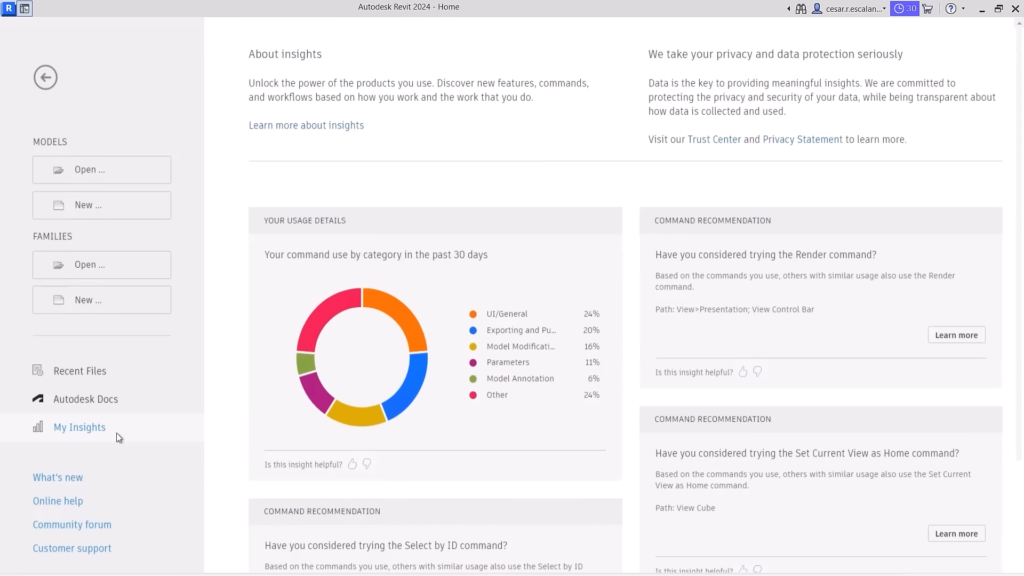
Revit 2024: My Insights panel displays command usage details and recommendations. ©Autodesk
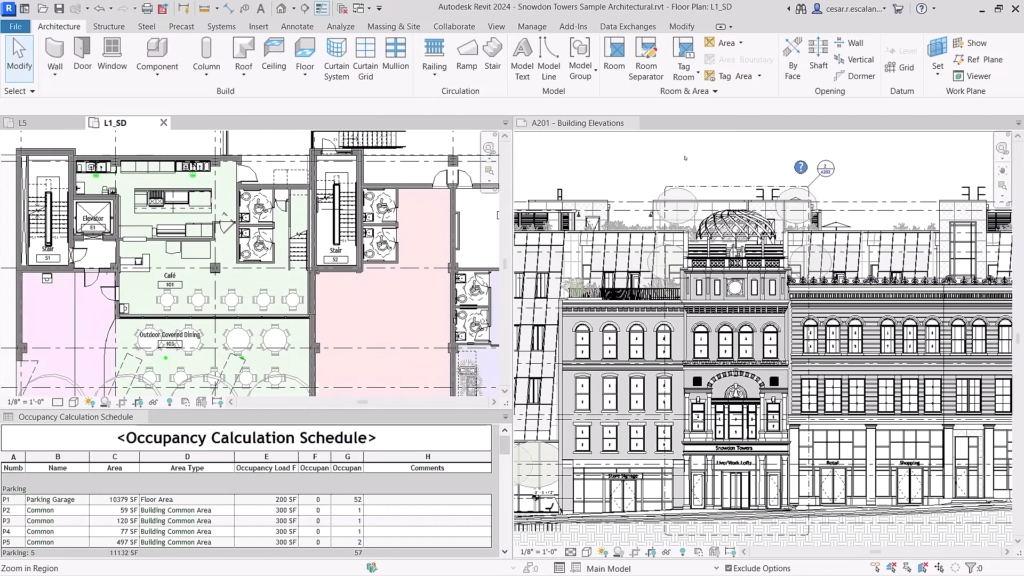
Revit 2024: New sample multi-disciplinary model. ©Autodesk

Revit 2024: Integration with Twinmotion improves visualization capabilities. ©Autodesk
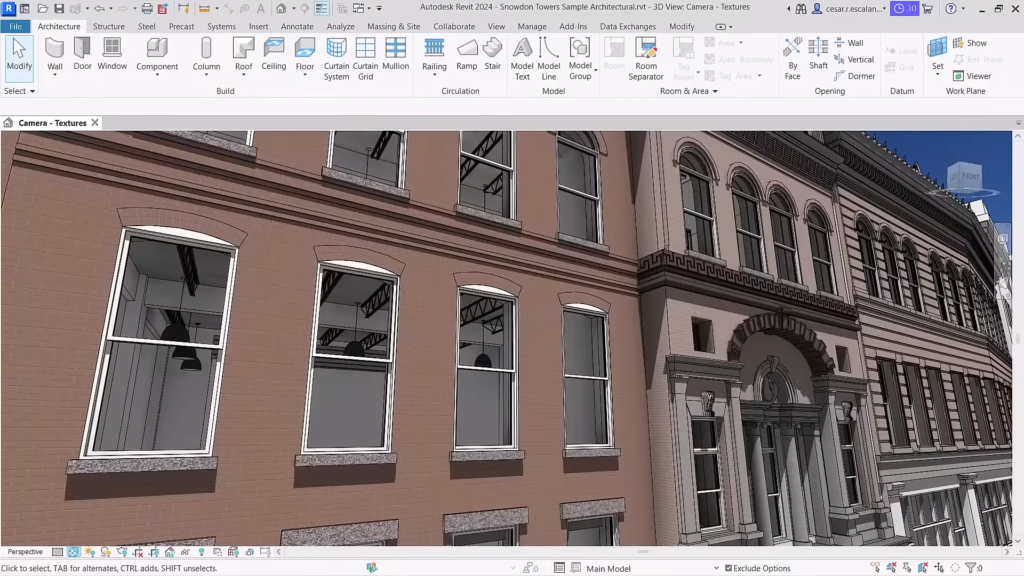
Revit 2024: New “Textures” visual style (between “Consistent Colors” and “Realistic”). ©Autodesk